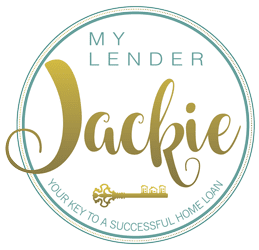Conventional Home Loans with only 3% Down!
Just this year, there is a new 3% down payment option for a conventional loan with Fannie Mae.
This program beats the FHA loan as the down payment is lower and also is less expensive, as there is no upfront mortgage insurance which FHA requires.
The documentation requirements are the same as for any conventional loan. Credit score requirements start at 680 scores. If your scores are below 680 then the FHA is your best option.
What is the maximum loan size allowed with the Conventional 3% down?
The Conventional 3% down program is capped at a $417,000 loan size.
What is the maximum purchase price for a home using the Conventional 3% down program?
There is no maximum purchase price to use the Conventional 3% down mortgage program, but 3 percent down on $430,000 is equal to $417,000. So if you’re seeking to minimize your out-of-pocket payments, look to purchase a home for $430,000 or less.
What income documentation does the 3% down Conventional mortgage program require?
The documentation requirements for a 3% down Conventional loan are the same as for any other Fannie Mae-backed mortgage. You should expect to provide recent paystubs, W-2s and federal income tax returns; as well as bank statements and other important paperwork. There is no additional paperwork specifically related to the 3% down Conventional program.
Are there occupancy requirements for the 3% down Conventional program?
Yes… the Conventional 3% down program is available for owner-occupied properties only. You cannot use the program for second homes or vacation homes; or investment properties.
Can I use the 3% down Conventional program for a mortgage refinance?
Yes, Fannie Mae allows homeowners to use the 3% down/ 3% equity for rate-and-term refinances only. If you wish to use the 3% down conventional to refinance a mortgage pre-dating June 1, 2009, consider the HARP refinance first. HARP is a mortgage for underwater homeowners and may offer better loan terms.
Are there property type restrictions for the 3% down Conventional program?
Yes, the 3% down Conventional program is restricted to certain property types. The program can only be used for single-family homes. This includes, townhomes, condominiums, co-ops, and rowhomes.
Can I use the Conventional 3% down for a 2-unit, 3-unit or 4-unit home?
No, the Conventional 3% down program may only be used for single-family Home.
Can I choose the 30-year fixed rate mortgage with the 3% down Conventional program?
Yes, both the 15 year and 30-year fixed rate mortgage rate are available to home buyers and refinancing households using 3% down or 3% equity (Refinance) Adjustable rates are not available with the 3% down program.
Is private mortgage insurance (PMI) required with the 3% down Conventional mortgage program?
Yes, the 3% down Conventional program requires that all borrowers carry mortgage insurance. It can either be included in with the mortgage rate or be paid separately each month.
Does the 3% down Conventional loan require upfront mortgage insurance or a funding fee, like an FHA loan?
No, the 3% down Conventional loan program does not require upfront mortgage insurance like FHA. It does require Monthly mortgage insurance until the home reaches 80% loan –to–value or has 20% equity.
Does the 3% down Conventional program require a minimum credit score?
Yes, the 3% down Conventional program requires a minimum credit score, typically 680 or better, depending on down payment source. If accepting a gift for the down payment borrower should have credit scores of above 740.
Can I use the 3% down Conventional program if my credit score is below 680?
No, the 3% down Conventional loan requires a credit score of at least 680. If your credit score is below 680 you can utilize the FHA program which allows only 3 ½ % down payment and credit scores from 550 and up.
Does the 3% down Conventional program enforce a maximum Debt-to-Income (DTI)?
Yes, the 3% down Conventional mortgage program enforces a maximum DTI, which varies by down payment “source”. Typically 45%. Debt-to-income is calculated by dividing your total monthly debt obligations into your total verifiable monthly income.
How long does it take to close escrow with the 3% down Conventional home loan?
The 3% down Conventional home loan program takes no longer to underwrite than any other conventional mortgage. Right Choice Mortgage approval times are generally 3 weeks or less.
How Do I Apply For The 3% down Conventional program?
The 3% down Conventional program is a great option and much less expensive then the FHA option.
If you’re buying a home and plan to make a low down payment; or need to refinance and have little home equity, take a good look at the 3% down Conventional program. It’s fast and the rates are great.
Get started with a free, no-obligation 3% down Conventional mortgage rate quote. See today’s rates and see how much home you can afford.
For More information about getting approved for a 3% down conventional home loan contact Jackie at 949 600-0944
What else you need to know about Conventional Mortgage Loans
A conventional mortgage is a loan that conforms to the guidelines set forth by Freddie Mac and Fannie Mae, the two government sponsored enterprises (GSEs) that provide liquidity for the mortgage market.
Another way to put it, a conventional loan is any mortgage that is not guaranteed or insured by the US government, such as VA, FHA and USDA.
In the United States, a conforming loan is a mortgage loan that conforms to GSE (Government Sponsored Enterprise) guidelines.
In general, any loan which does not meet guidelines is a non-conforming loan. A loan which does not meet guidelines specifically because the loan amount exceeds the guideline limits is known as a jumbo loan.
Starting in 1970, Fannie Mae was authorized by the United States Government to purchase residential mortgage loans. Fannie Mae worked with Freddie Mac to develop uniform mortgage documents and national standards for what would come to be known as a conforming loan.
The Office of Federal Housing Enterprise Oversight (OFHEO) set the criteria on what constitutes a conforming loan limit that Fannie Mae and Freddie Mac can buy. Criteria include debt-to-income ratio limits and documentation requirements.
The maximum loan amount is set based on the October-to-October changes in median home price, above which a mortgage is considered a jumbo loan, and typically has higher rates associated with it. This is because both Fannie Mae and Freddie Mac only buy loans that are conforming, to repackage into the secondary market, making the demand for a non-conforming loan much less.
Just who are Fannie and Freddie?
Fannie Mae and Freddie Mac are publicly traded companies and Government Sponsored Enterprises. (GSEs) They are also the largest source of mortgage money in the United States. The sole purpose of these two agencies is to securitize mortgages and provide liquidity for the mortgage markets.
Why do they need to Securitize Mortgages?
The process of securing mortgage loans and selling them on the secondary market allow banks to continue writing loans for real estate.
Example:
Say you went to your favorite lender and were approved for a mortgage loan of $300,000. They would provide funds to complete your purchase or refinance. They could collect your payment for the next 30 years until your loan was paid off, but if they tied up all their money for 30 years, eventually they would run out of cash to lend on auto loans, credit cards etc…
Fannie and Freddie step in to purchase your mortgage and bundle it with thousands of others and sell them as bonds on the mortgage back securities market.
What Type Of Mortgages Do Fannie and Freddie Purchase?
- Typically they meet the conforming loan limit which is currently less than $417,000
- Borrowers must have minimum credit score requirements and debt to income ratios
- Borrowers with less than 20% equity will have PMI
- Both Fannie and Freddie have strict guidelines which is why you need to work with a professional like Jackie to guide you through the process.
Even if Fannie or Freddie “own” your loan, they do NOT service it. The original lender is usually who retains the servicing rights or to put more simply… the ones sending you your payment coupon and collecting your payments each month.

Get a Fast Quote
No Hidden Fees – No Obligation – No Upfront Costs
